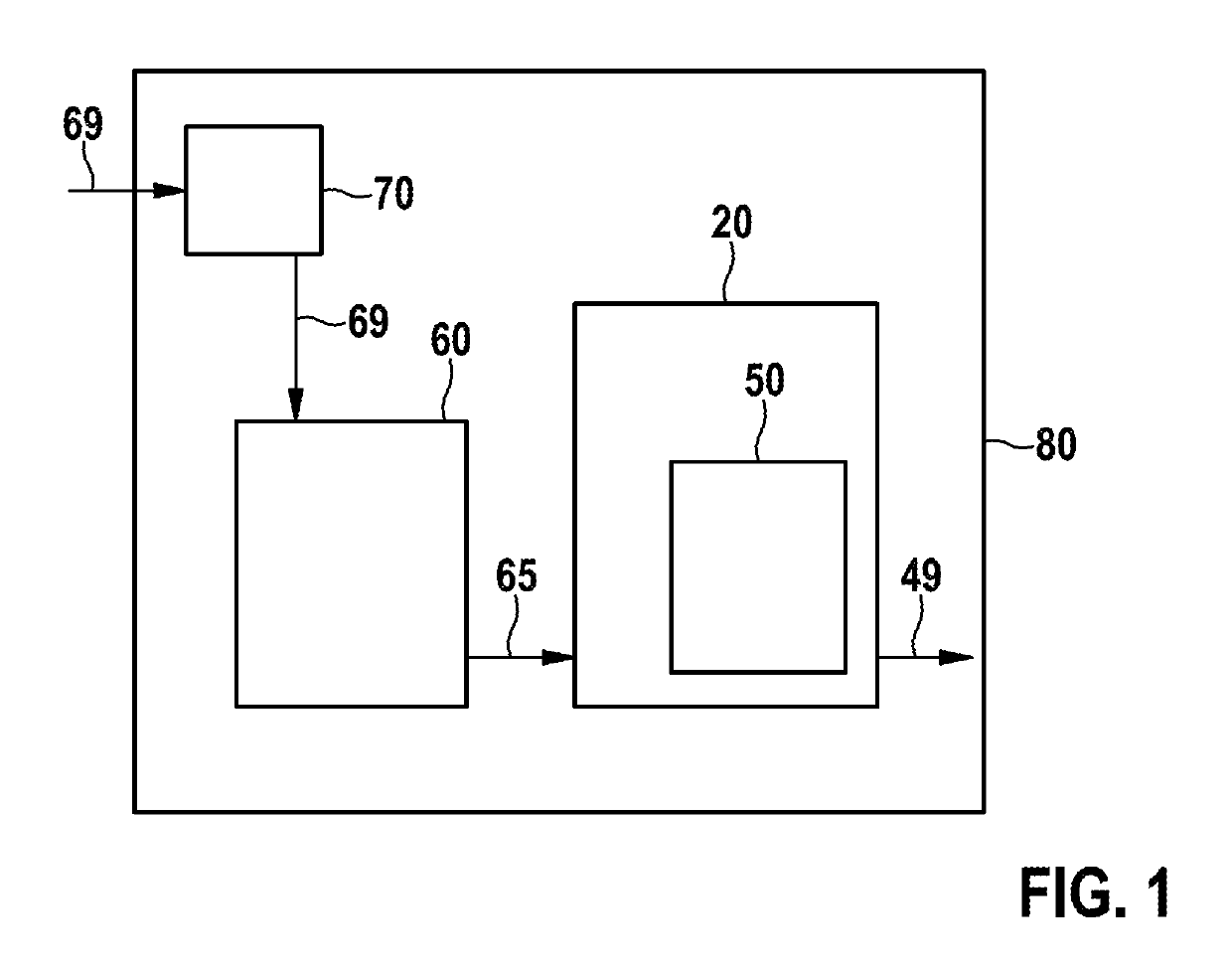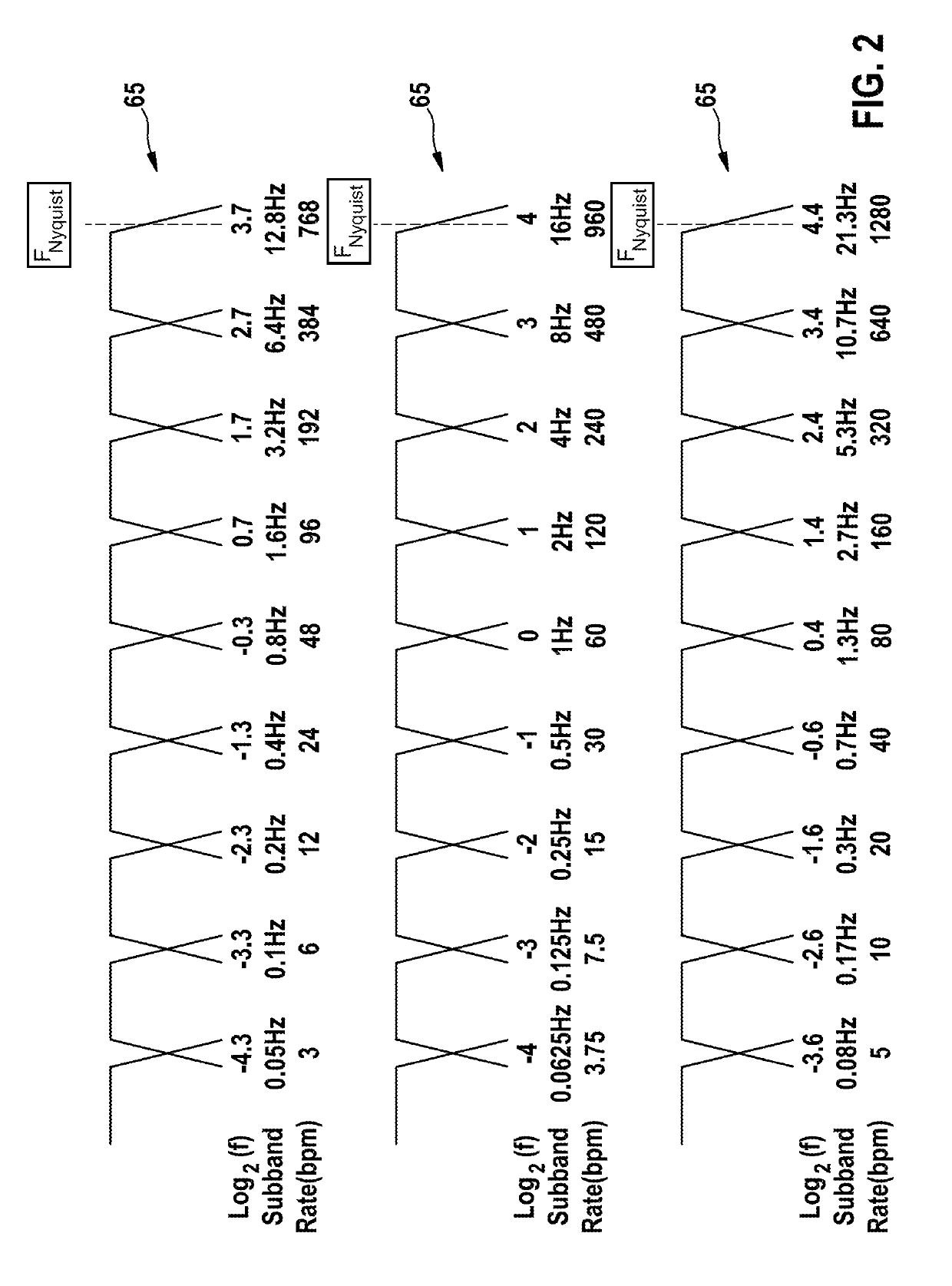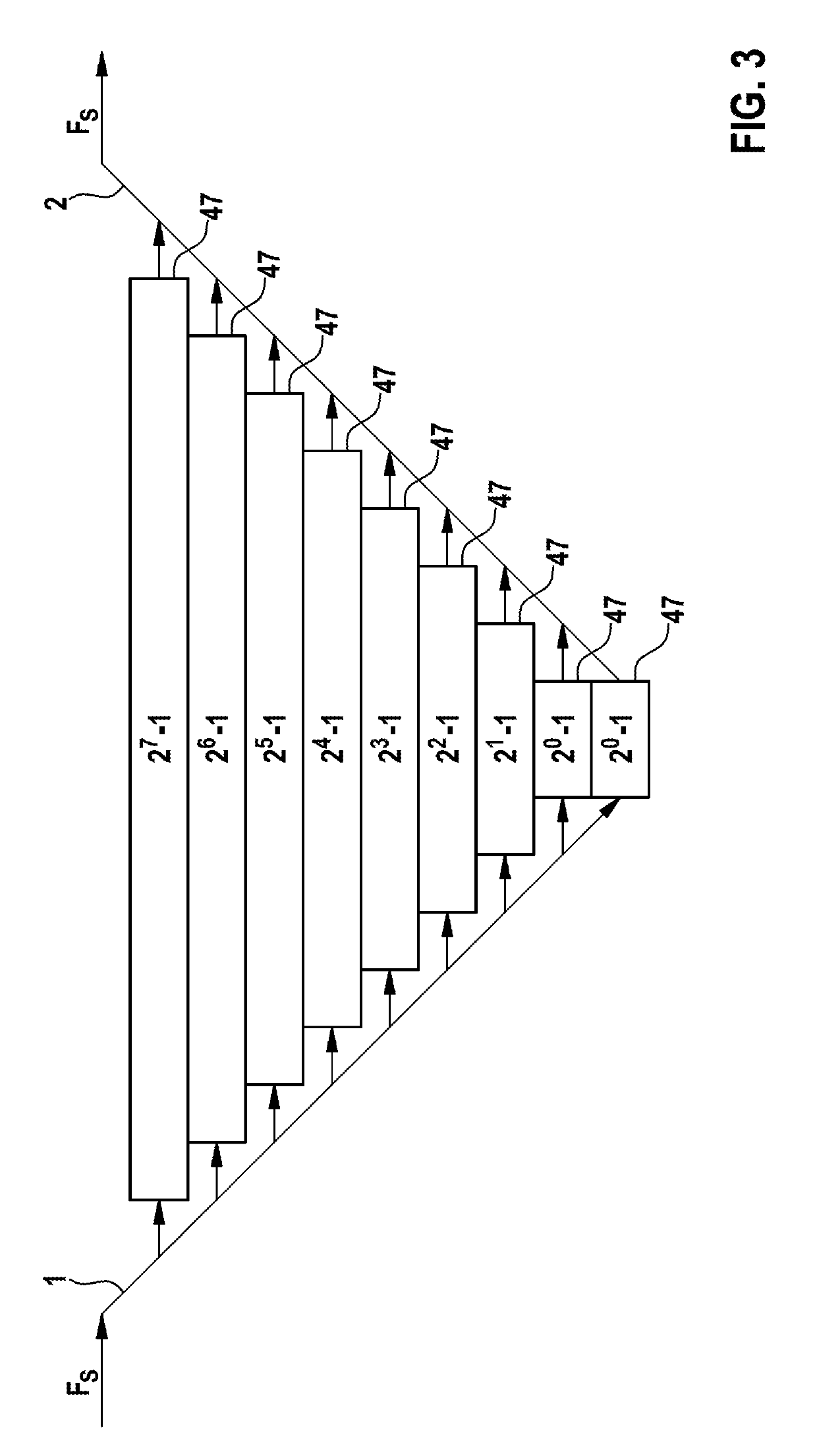Implantable cardiac device adapted to extract a patient's respiratory waveforms from an intrathoracic or intracardiac impedance, pressure and/or accelerometry input stream
a cardiac device and respiratory waveform technology, applied in the field of implantable cardiac devices, can solve the problems of low implementation cost, large memory space, and high cost of high energy consumption, and achieve the effect of improving the discrimination of physiological signals, low implementation cost, and optimizing code reus
- Summary
- Abstract
- Description
- Claims
- Application Information
AI Technical Summary
Benefits of technology
Problems solved by technology
Method used
Image
Examples
Embodiment Construction
[0033]FIG. 1 shows a schematic drawing of an exemplary embodiment of an implantable cardiac device 80 according to the present invention. In this exemplary embodiment, the implantable cardiac device 80 is exemplarily realized as a pacemaker, which comprises a sensing unit 70 that is adapted to measure an intrathoracic or intracardiac impedance input stream 69 comprising a patient's respiratory waveforms. In other embodiments of the present invention, the sensing unit 70 of the implantable cardiac devices 80 is adapted to measure an intrathoracic and / or an intracardiac pressure and / or an accelerometry input stream 69 comprising a patient's respiratory waveforms. In this embodiment, the sensing unit 70 is exemplarily realized as an impedance based respiration monitor that is exemplarily connected to a pacemaker lead which is positioned in the right atrium, right ventricle or left ventricle of a patient, depending on the kind of therapy-device the implantable cardiac device 80 is reali...
PUM
 Login to View More
Login to View More Abstract
Description
Claims
Application Information
 Login to View More
Login to View More - R&D
- Intellectual Property
- Life Sciences
- Materials
- Tech Scout
- Unparalleled Data Quality
- Higher Quality Content
- 60% Fewer Hallucinations
Browse by: Latest US Patents, China's latest patents, Technical Efficacy Thesaurus, Application Domain, Technology Topic, Popular Technical Reports.
© 2025 PatSnap. All rights reserved.Legal|Privacy policy|Modern Slavery Act Transparency Statement|Sitemap|About US| Contact US: help@patsnap.com



